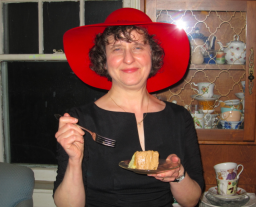Ive been looking into various recipes and explanations of creating a starter, and i thought id put a summary here.
--
Pretty well all of the recipes include a replication step like "divide in two, disposing of one half, and adding back a particular ratio mixture as a replacement". A very few have slightly different steps in the first few days but end up with this process at the end.
Additionally almost all recipes have the same general description for success: a mixture that when replicated displays a leavening effect (rises to about double its size) and a sort of "large bubble" foam on a consistant basis over several days. Notably many authors mention that it is common to see a false leavening effect caused by undesirable bacteria in the early phase of the process that then disappears after several days only to be replaced by the real leavening effect a few days later.
By far the most common recipe comes down to: take a 1:1 by weight mixture of flour and water and replicate every 24 hours until stable. Some recipes suggest 12 hours, and some require specific types of flour, with many recommending wholemeal or rye flour until the mixture is stable and then switching to AP afterwards. Most suggest that the unit be a cup of water. Also a number suggest using a 1:2 mixture (1 cup flour to 1 cup water is about 1:2 flour to water by weight),
Occasionally a few additives are suggested:
Acidic additives: These usually include some kind of acidic juice, with pineapple or orangejuice in the initial steps. The idea is that the juice lowers the ph preventing undesirable bacteria from growing but providing a good environment for wild yeast while at the same time providing sugars for the wild yeast to feed on. Vinegar is also suggested occasionally for similar reasons.
There are a much lower number suggesting using milk products. In this case the intention seems to be to encourage lactobascili, and also possibly the same justification as for the acidic additives.
Diastatic malt is also sometimes recommended with a tiny amount being added in the initial steps, also people that use AP flour will be unknowingly including tiny amounts of this as it usually added by the miller. The intention of this seems to be to provide sugar to the wild yeast, but enzymatically from the starch from the flour. Sometimes sweetener is suggested for similar reasons.
A few sources seem to suggest that you can manufacture wild yeast from commerical yeast, or that commerical bakers yeast will revert to wild.
One or two seem to suggest using things like unmilled rye or barly, or using the skins of wild or field grown grapes.
---
When i decided to make a starter I had access to a commerical starter "Seitenbacher(c) Natur Saurteig" that is widely available in grocery stores where I live in Germany.
Since I thought that was kind of cheating I decided I would make two, one a replication starting from some left over dough from a batch i made with the starter, and one with raw material. Aside from the fact that one included a small part of the dough I did exactly the same thing with both: replicating of a blanced blend of rye and wholemeal flour mixed at 1:1 with water with the base weight being 200 grams. I was very careful not to contaminate the wild one with the commerical, always working with the wild one first. On the third day I added a tiny amount (0.1 of a gram or so) of diastatic malt after I replicated (i didnt have any to add on the first day), And by the 8th day i had stability. The two behave somewhat differently with the wild one being a little slower to rise, but rising further in the oven, and they make a nice loaf mixed together. :-)
My opinion of this is that Im not all that convinced by the additives, with the exception of the diastatic malt. For the juices the reason is that I think its hard to control how acidic the formulation goes, and that citrus frust have their own associated bacteria and yeasts, which are probably not as appropriate as the yeasts we see living naturally on grain. (I will say though that I have seen one particularly cogent argument, incidentally posted here, in favour of using juice.)
For the milk i think its just generally a bad idea, some of the bascili in milk can kill you and also most milk you can buy is pasteurized anyway, and i think that the bascili we want grow naturally on the grain and on our hands and other places. We dont need it from milk. Sweetener I think is a bad idea. In general they are preservatives,
My feeling is that one wants to encourage the wild stuff on the grain to replicate and that introducing things that are totally foreign wont help. Diastatic malt is an exception because it is a substance that does naturally occur in wheat and other grains and so adding a bit more doesnt drastically change things. Also its effect is slower, something that i think is important, providing a steady supply of sugar over time instead of a huge amount at the start which tapers off over time, something which doesnt seem to me to be inclined to make for a stable environment, and after all one thing we are looking for is a stable environment.
Anyway, Im no expert, form your own opinions. But most importantly try it, it isnt very hard. :-)






